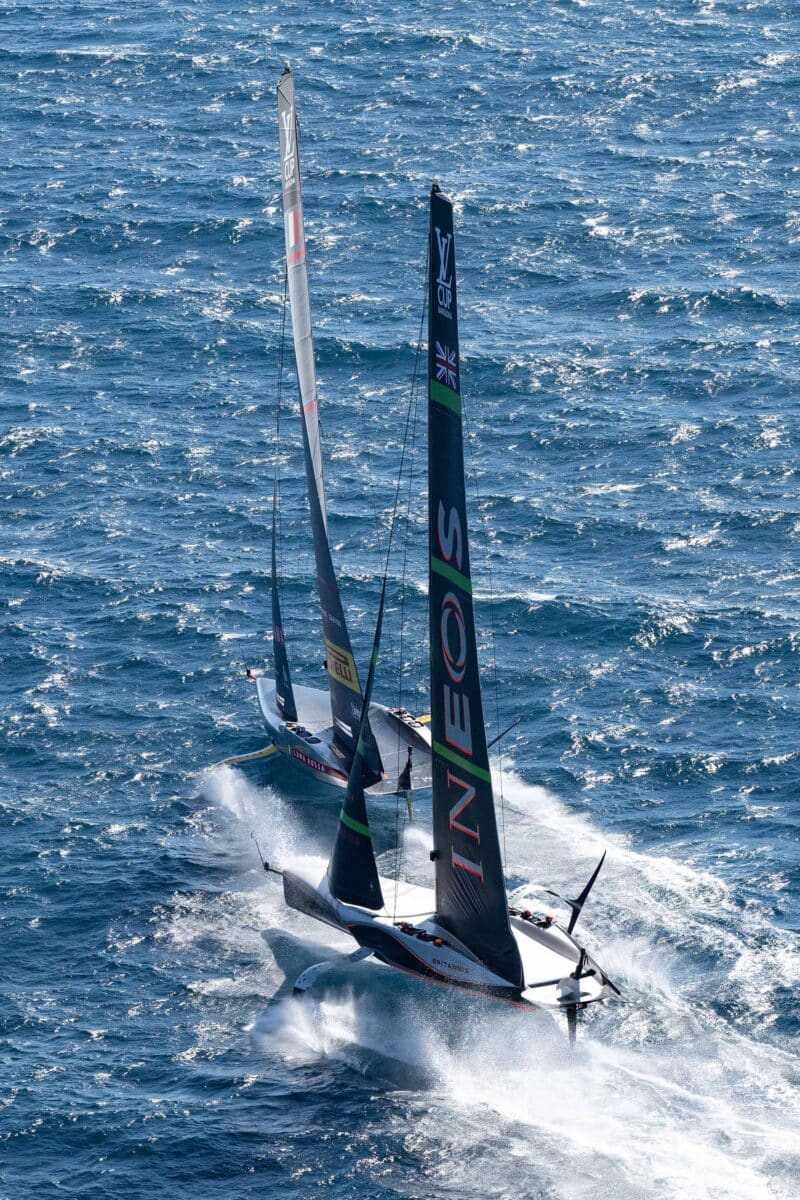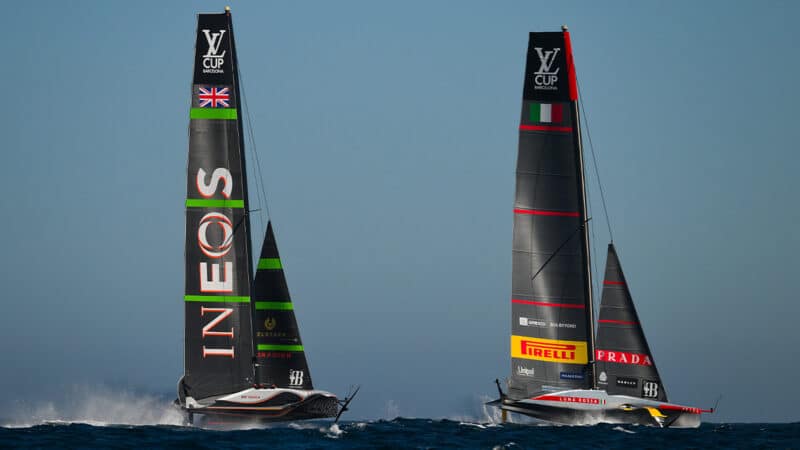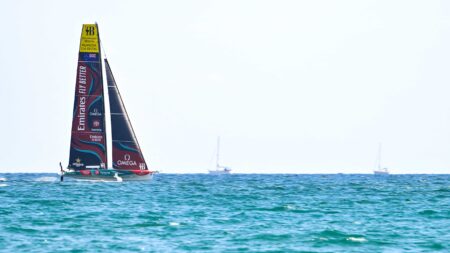“There are really strong similarities between F1 and America’s Cup, so it was a natural transition,” he tells Adam Hay-Nicholls in our latest issue. “In both cases, you win with a combination of the best technology and the best drivers – or helmsmen.
“Generally, the race is won by the fastest car or the fastest boat, but if no one has a big technical advantage, it comes down to human beings to extract the maximum from the opportunities. That’s where it comes down to tactics, strategy, and pushing everything to the limit.
“In F1, you have one driver in each car. In the America’s Cup this year, you have eight sailors per boat. Like grand prix racing, teams field many unseen people working in design, engineering and operations. There are a hundred people working to try and get that car or that boat to cross the finish line first. Team New Zealand’s design office is 45 people alone, and they’re all at the top of their game.”
The fine margins seen between teams in Formula 1 have been also evidenced on the water this year in Barcelona. The Mediterranean coast is hosting the America’s Cup series, which includes the battle to select the team that will challenge New Zealand later this month — called the Louis Vuitton Cup.
Four of the five challengers (US, Switzerland, Italy and France) were gradually eliminated after a series of rounds involving head-to-head races, where the winning margin is typically measured in seconds after races that last for between 25 and 45 minutes.

Ineos Britannia vs Luna Rosso: crews are looking for marginal gains amid close competition
Getty Images
Each heat takes place on the 1.8 mile course and the two boats race up and down the course four times (eight legs in total). The first to finish claims a point. In the latter rounds, these heats continue until one team accrues seven points and is declared the winner.
The final of the Louis Vuitton Cup saw Britain’s Ineos Britannia defeat Italy’s Luna Rosso boat 7-4 in a thrillingly close race where Ineos took the initial lead but had to cover the Italians closely. Halfway through the race, the gap between the two boats was just four seconds and Italy came within a boat-length of seizing the lead. Ainslie’s crew held on, however, and from then on took advantage of their lead to frustrate Italy at every opportunity, eventually crossing the line 17sec ahead.
It was a fitting end to a selection process that has delivered enthralling racing, with leads chopping and changing regularly. For days, it was impossible to predict which of Britain or Italy would progress. The fourth heat of the final saw Luna Rosso beat Ineos Britannia by just four seconds to level the score 2-2. The teams couldn’t be split over the following two days of racing either, taking two wins apiece over tight and tactical heats, as well as one easy win for Ineos after the Italians’ boat was damaged.
But Ineos managed to pull out its advantage in rough seas on Wednesday, taking an early lead in both races and maintaining that advantage, albeit by only nine seconds in the second race of the day. That set the team on its path to success, with victory on Friday confirming Ineos Britannia as the challenger to New Zealand.


